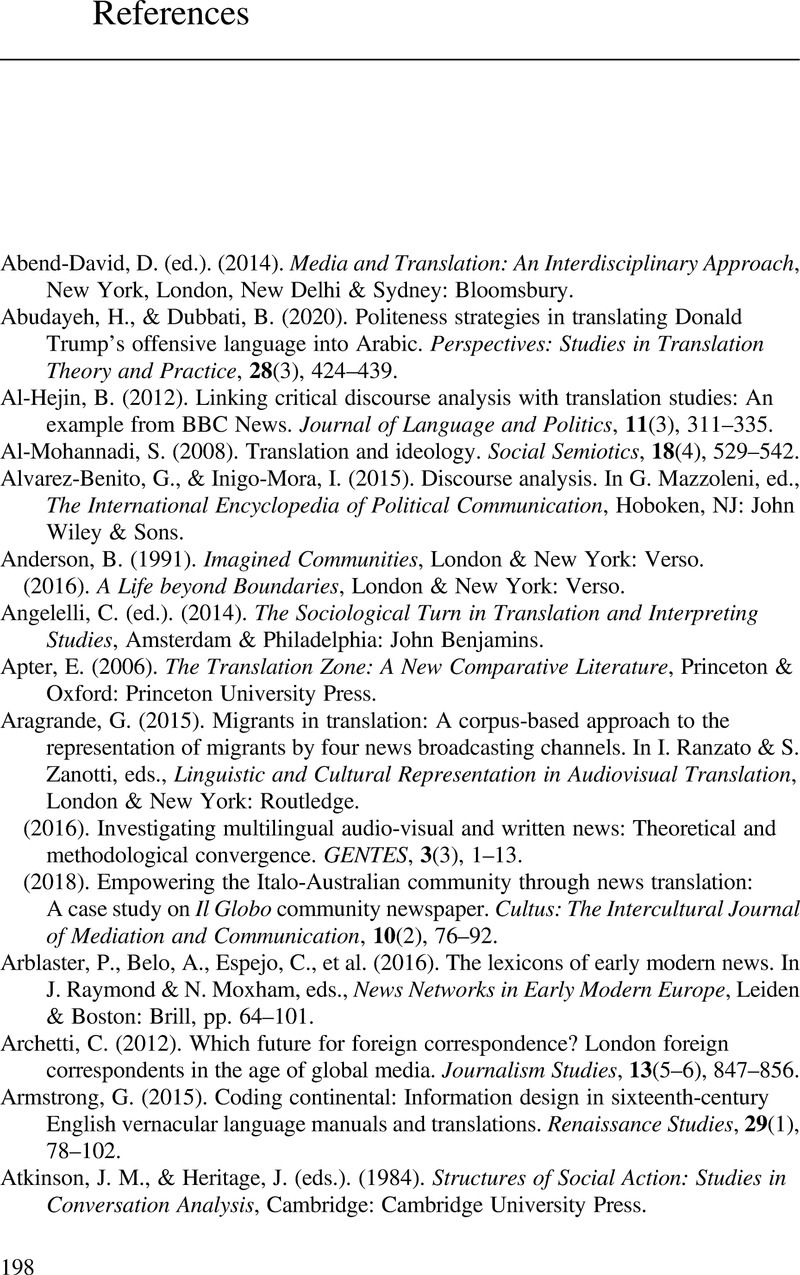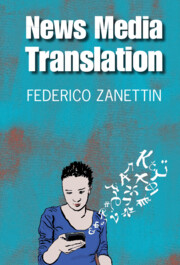Book contents
- News Media Translation
- News Media Translation
- Copyright page
- Contents
- Figures and Table
- Acknowledgments
- Introduction
- 1 Putting News Media Translation into Perspective
- 2 Translation as News
- 3 Approaches to News Media Translation
- 4 Ethnomethodology and News Media Translation
- Conclusion
- Appendix A
- References
- Subject and Name Index
- References
References
Published online by Cambridge University Press: 29 October 2021
- News Media Translation
- News Media Translation
- Copyright page
- Contents
- Figures and Table
- Acknowledgments
- Introduction
- 1 Putting News Media Translation into Perspective
- 2 Translation as News
- 3 Approaches to News Media Translation
- 4 Ethnomethodology and News Media Translation
- Conclusion
- Appendix A
- References
- Subject and Name Index
- References
Summary

- Type
- Chapter
- Information
- News Media Translation , pp. 198 - 232Publisher: Cambridge University PressPrint publication year: 2021



